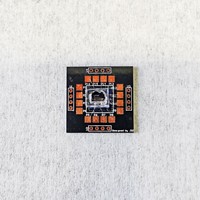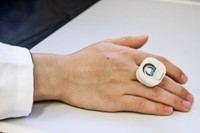Advertisement
Grab your lab coat. Let's get started
Welcome!
Welcome!
Create an account below to get 6 C&EN articles per month, receive newsletters and more - all free.
It seems this is your first time logging in online. Please enter the following information to continue.
As an ACS member you automatically get access to this site. All we need is few more details to create your reading experience.
Not you? Sign in with a different account.
Not you? Sign in with a different account.
ERROR 1
ERROR 1
ERROR 2
ERROR 2
ERROR 2
ERROR 2
ERROR 2
Password and Confirm password must match.
If you have an ACS member number, please enter it here so we can link this account to your membership. (optional)
ERROR 2
ACS values your privacy. By submitting your information, you are gaining access to C&EN and subscribing to our weekly newsletter. We use the information you provide to make your reading experience better, and we will never sell your data to third party members.
Analytical Chemistry
An Aptamer-Based Sensor For Small Molecules
Short strands of DNA enable a microfluidic sensor to detect cocaine in blood serum
by Bethany Halford
March 16, 2009
| A version of this story appeared in
Volume 87, Issue 11
Sensing small molecules in unprocessed aqueous solutions, such as blood and simple soil extracts, would be a boon for point-of-care medical diagnostics and environmental monitoring in the field. So far, however, such systems have been developed for only a few specialized targets. Now, scientists at the University of California, Santa Barbara, have developed a new microfluidic, electrochemical, aptamer-based sensor that has the potential to monitor many different targets (J. Am. Chem. Soc., DOI: 10.1021/ja806531z). The sensor, developed by H. T. Soh and colleagues, integrates short strands of DNA that fold when exposed to a specific small molecule, thereby generating an electrical signal in the presence of the analyte. Soh's team created a sensor for cocaine and found that it took only a minute for the device to detect the narcotic in undiluted blood at micromolar concentration. This approach "may lay the groundwork for the real-time, point-of-care detection of a wide variety of molecular targets," the authors note.





Join the conversation
Contact the reporter
Submit a Letter to the Editor for publication
Engage with us on Twitter